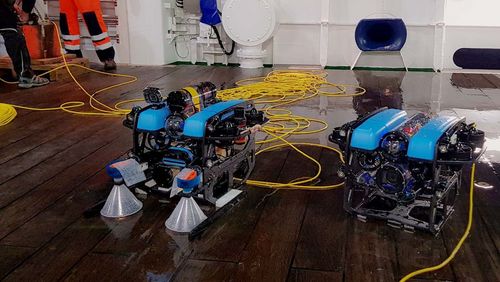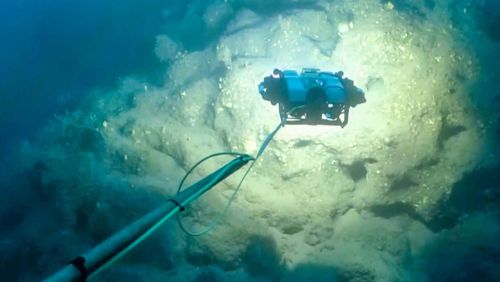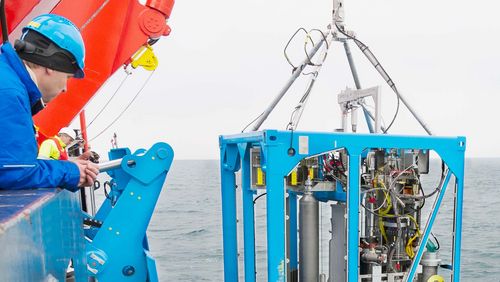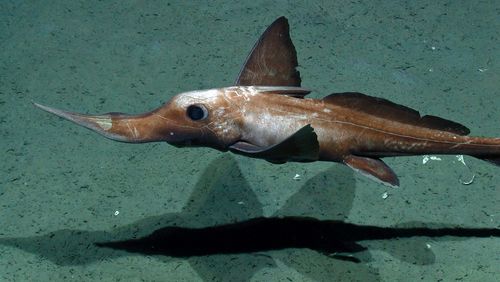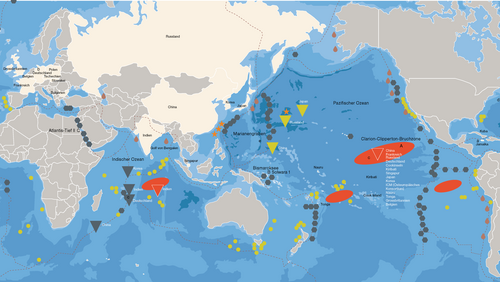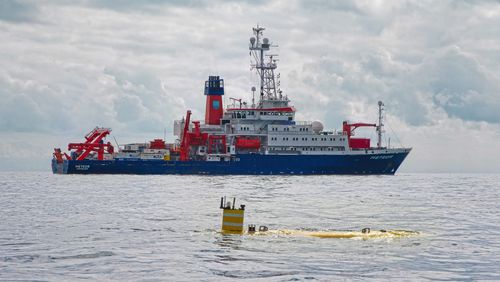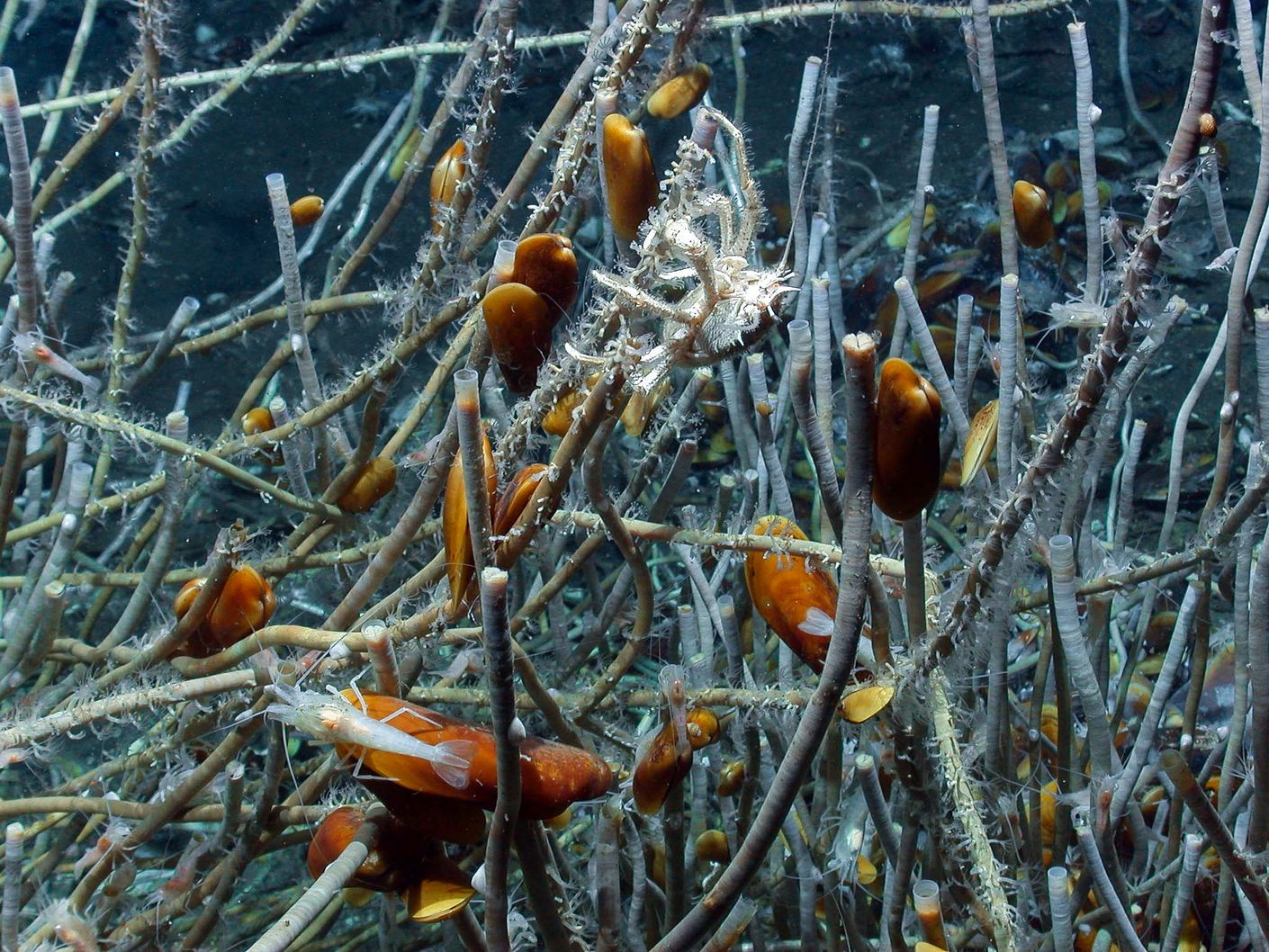
worm colony at an ocean depth of 3100 metres in the Atlantic, off the coast of West Africa.
Coveted marine resources
Over the course of millions of years, the deep sea has evolved into an extraordinary and vitally important ecosystem. Until recently, it has also remained untouched by human hands. Now, however, numerous countries and companies want to mine the treasures that slumber in the deep. The new Innovation Center for Deep-Sea Environmental Monitoring, at MARUM at the University of Bremen, wants to help ensure that mining the seabed does not wreak the same devastation as has mining on land. The Center is financed by the Werner Siemens Foundation.
By definition, the deep sea begins at an ocean depth of 200 metres, with the average depth of all oceans being 3700 metres. And the old adage that there is nothing new under the sun has no validity when it comes to the deep sea. Quite the opposite: over 90 percent of the seabed is a true terra incognita. Yet, the few areas that have been explored have conjured visions of riches: large deposits of copper, zinc, cobalt, rare earth elements, gold and silver have been discovered. And demand for these metals is high—they are used in smartphones, rechargeable batteries, LEDs, plasma screens, electric motors, solar panels, wind turbines, semiconductor technology and other conveniences of our modern world. Currently, 29 nations and private companies have registered their interest in the valuable resources. Indeed, they have already successfully taken the first step: they hold exploration contracts. The company that has progressed the furthest is Nautilus Minerals, whose majority shareholders are two billionaires, from Oman and Russia respectively. Nautilus Minerals is hoping to start deep-sea mining in 2019. But China, Japan, India, Russia, Brazil and EU countries such as France, Germany, Belgium, the United Kingdom and Poland have also been granted exploration contracts for potentially lucrative marine regions.
New genes from the deep
The treasures buried in the deep sea are also attractive to the medical and pharmaceutical companies that are hoping to discover useful new organisms and genes. “The gene pool in the deep sea may prove more commercially interesting and profitable even than the mineral deposits in the seabed,” says Professor Michael Schulz, director of MARUM – Center for Marine Environmental Sciences at the University of Bremen. Over a dozen medications with active agents stemming from marine life have already been approved. In future, it is expected that they will number in the thousands. New and fast genetic screening technologies have also spurred the search for useful substances in the seas. “There are vehicles that glide through water, making DNA analyses as they go,” says Michael Schulz. “What’s happening now is completely new.” One example is the American J. Craig Venter Institute, which conducts global ocean sampling expeditions and trawls the waters for genomes of thousands of marine organisms, always on the lookout for interesting gene sequences.
First explore, then exploit
The path from exploration contract to mining contract is—and rightly so—long, demanding and expensive. Nevertheless, the global tug of war for marine resources is in full swing. The first company will most likely begin mining in one to ten years. And as soon as companies are allowed to extract the coveted minerals from the deep, they will inflict damage of unforeseeable dimensions in the largely unexplored ecosystem of the deep sea. MARUM director Michael Schulz has this to say about the hasty excavation of deep-sea resources: “It would be unwise to destroy valuable deep-sea ecosystems through mining only to understand in hindsight their true value for Earth.”
Text: Brigitt Blöchlinger
Photos: MARUM, Center for Marine Environmental Sciences at the University of Bremen




